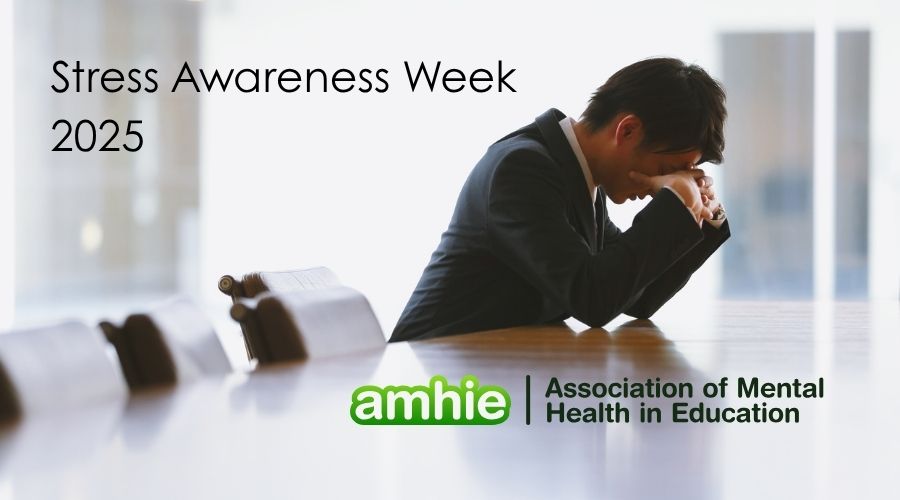
Optimising Employee Wellbeing Through Strategic Stress Management
This week, as we mark International Stress Awareness Week (3-7 November), it is essential for the UK education sector to move beyond simply acknowledging stress and instead adopt strategic, systemic approaches to wellbeing. The high demands placed on headteachers, mental health leads, and all teaching staff, intensified by current systemic pressures, mean that tackling the root causes of stress is no longer a luxury—it is a critical necessity for retaining a healthy and effective workforce.
The Leaking Dam: Understanding Stress in Education
The factors driving stress and burnout across our schools, colleges, and universities are multifaceted and interlinked. They are like a dam under constant pressure from a high-volume river. The pressure comes primarily from the overwhelming volume of workload and time pressure. Educators are working intensely, often the equivalent of two additional unpaid days a week, battling excessive administrative burdens, and navigating complex roles defined by conflict and ambiguity.
Current issues facing the UK education workforce, such as unstable policy changes, increased accountability metrics, and the pressures of the ‘student-as-consumer’ model (particularly in Higher Education), only intensify this load. Furthermore, a heavy clerical workload continues to be a major stressor, reportedly affecting wellbeing even more than the challenges of teaching through lockdown. When combined with cracks in the supportive structure—like a lack of administrative backing, poor school culture, and the challenges of managing diverse and trauma-impacted classrooms—the result is an inevitable breakthrough leading to emotional exhaustion, depersonalisation, and a diminished sense of accomplishment.
Strategic Tips to Reduce and Manage Stress
Addressing this crisis requires decisive action at both the organisational and individual level. Mental health leads and school leadership have a pivotal role in creating a nurturing vs. a combative environment.
Organisational and Leadership Strategies:
Audit and Reduce Administrative Burden:
This is a primary stressor. Leaders must rigorously audit all non-teaching, clerical tasks. Can technology streamline these duties? Can support staff or new processes absorb some of this load? Prioritise giving educators back time to engage in core, meaningful tasks like teaching and research, combating the demoralising ‘rustout’ caused by underutilisation of skills.
Boost Autonomy and Voice:
Teachers feel demoralised when they believe they have no voice and a lack of choice in the conduct of their work. Foster a school culture where staff feel empowered, trusted, and have input into relevant policy and classroom practice. This sense of autonomy and control acts as a buffer against stress and counters the feeling of mistrust caused by top-down changes.
Prioritise Genuine Support:
Lack of administrative support is frequently cited. This means more than just a quick word—it involves visible support in handling discipline, providing necessary resources, and valuing teachers’ opinions through consistent, positive action. Build a genuine sense of community where low social support is not a factor leading to burnout.
Managing Stress During the School Day (Individual & Team Tips):
Micro-Breaks for Continuous Alertness:
Teaching requires high levels of continuous alertness. Encourage and model the use of short, focused micro-breaks (5 minutes) between lessons or during planning time. This could be a quick walk, mindful breathing, or a deliberate switch off from screens.
The Power of ‘Fences’:
Role conflict often stems from the clash between work and personal life (interrole conflict). Encourage staff to set clear, firm boundaries—or ‘fences’—around their time. This might involve an agreed ‘no email after 6pm’ policy or dedicated, protected time slots for different tasks to manage role overload.
Collaborative Problem-Solving for Classroom Management:
Classroom management challenges are a primary cause of burnout, especially with the increased complexity of inclusive classrooms. Instead of isolating teachers, implement weekly, cross-departmental problem-solving sessions where staff can share effective strategies for discipline and managing diverse needs. This builds a shared sense of efficacy and reduces the individual burden.
Recognise and Counter Secondary Trauma:
For staff working with trauma-impacted students or those from systemically disadvantaged backgrounds, compassion fatigue and secondary trauma are real. Mental health leads should implement and promote ‘debriefing’ structures and accessible, confidential support to process these intense emotional burdens.
From Idealism to Efficacy
Teacher burnout often starts when the idealist—the person committed to making a difference—is repeatedly frustrated by bureaucratic working conditions that prevent them from doing what they believe is best. By strategically managing and reducing the key stressors related to workload, support, and policy impact, we can restore the conditions that allow educators to thrive.
Focusing on these strategic shifts will help the UK education sector not just ‘cope’ with stress, but actively create nurturing, high-efficacy environments where both students and staff can achieve their best.
The Team at AMHIE
November 2025
Do you need to train a mental health lead? Explore our AMHIE Training options:

AMHIE’s DfE-aligned training equips your whole-school team to achieve mental health excellence and secure outstanding inspection outcomes. Transform your core school culture and practices from reactive support to proactive prevention. This strategic shift allows your staff to confidently move away from traditional sanctions and toward implementing alternative, positive behaviour management strategies, creating a supportive learning environment. This is your evidence-based pathway to compliance and long-term well-being success. Join over 1,500 trained leaders who trust AMHIE.
Ready to embed a positive whole-school approach? Explore the full AMHIE training offer and secure your team’s place today: Visit the AMHIE Training Page
To access our free resource, join as a Free AMHIE Member and gain all of the benefits of membership
References:
Agyapong, Belinda, et al. “Stress, burnout, anxiety and depression among teachers: A scoping review.” International journal of environmental research and public health 19.17 (2022): 10706.
Burrow, Robin, Rachel Williams, and Daniel Thomas. “Stressed, depressed and exhausted: Six years as a teacher in UK state education.” Work, employment and society 34.5 (2020): 949-958.
Gastaldi, Francesca Giovanna Maria, et al. “Measuring the influence of stress and burnout in teacher-child relationship.” European Journal of Education and Psychology 7.1 (2014): 17-28.
Hepburn, Alexa, and Steven D. Brown. “Teacher stress and the management of accountability.” Human Relations 54.6 (2001): 691-715.
Shackleton, Nichola, et al. “Teacher burnout and contextual and compositional elements of school environment.” Journal of school health 89.12 (2019): 977-993.
Talmor, Rachel, Shunit Reiter*, and Neomi Feigin. “Factors relating to regular education teacher burnout in inclusive education.” European Journal of Special Needs Education 20.2 (2005): 215-229.
Turner, Kristina, and Susanne Garvis. “Teacher educator wellbeing, stress and burnout: A scoping review.” Education Sciences 13.4 (2023): 351.
R. Richards, K. Andrew, Michael A. Hemphill, and Thomas J. Templin. “Personal and contextual factors related to teachers’ experience with stress and burnout.” Teachers and Teaching 24.7 (2018): 768-787.
Rasheed-Karim, Walifa. “The effect of stressful factors, locus of control and age on emotional labour and burnout among further and adult education teachers in the UK.” International Journal of Emerging Technologies in Learning (iJET) 15.24 (2020): 26-37.
